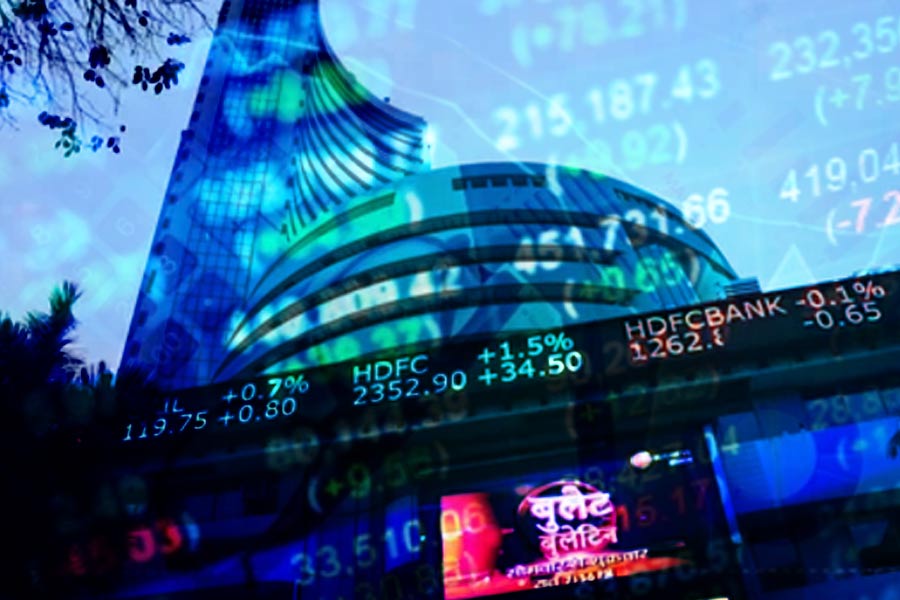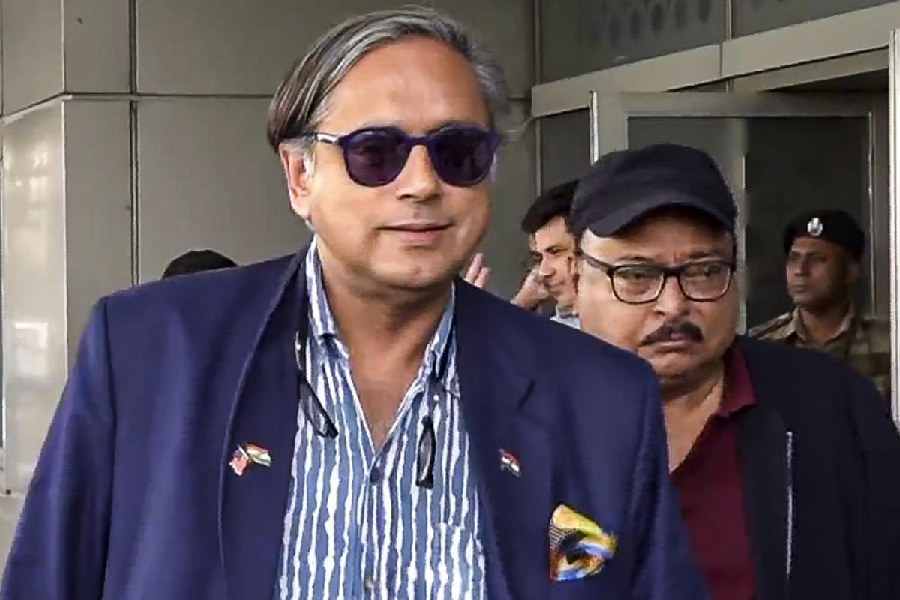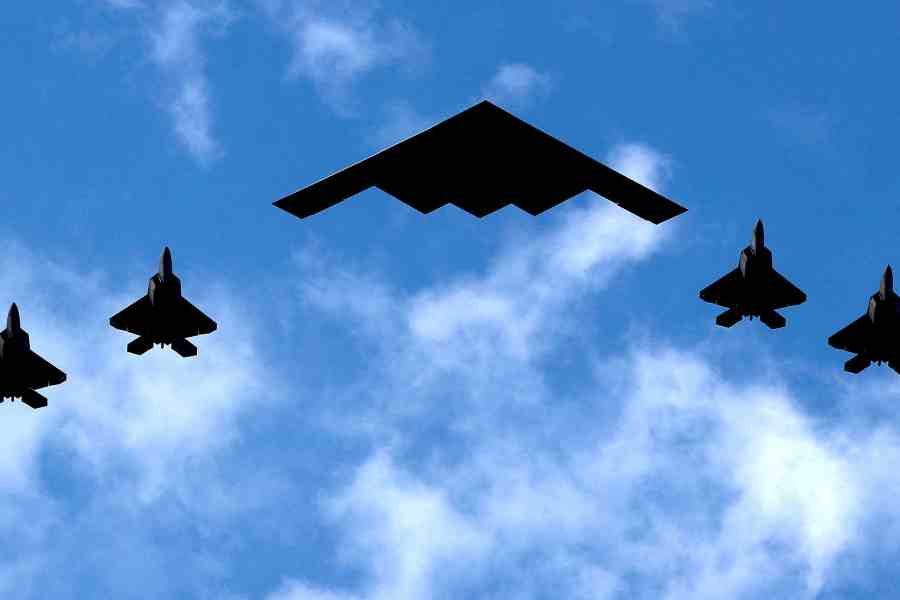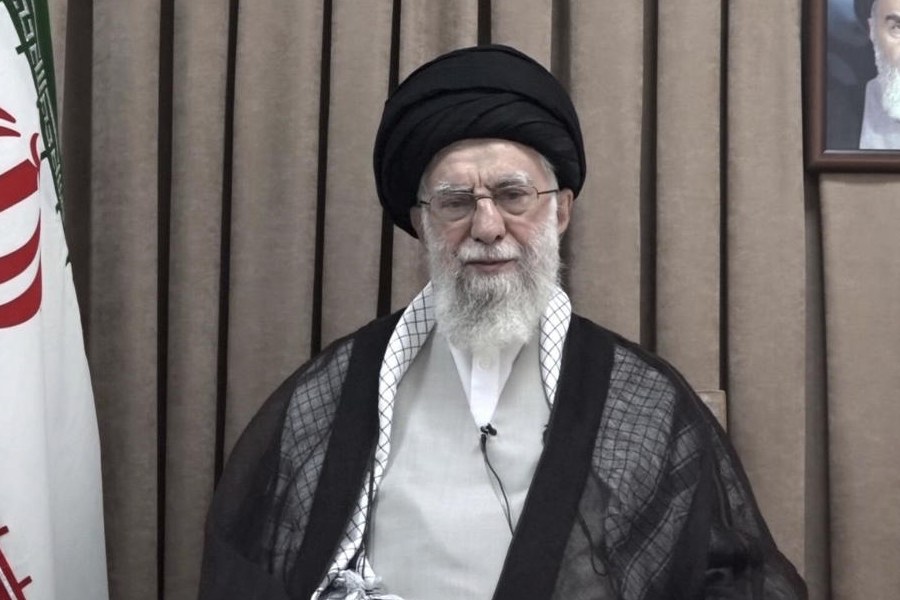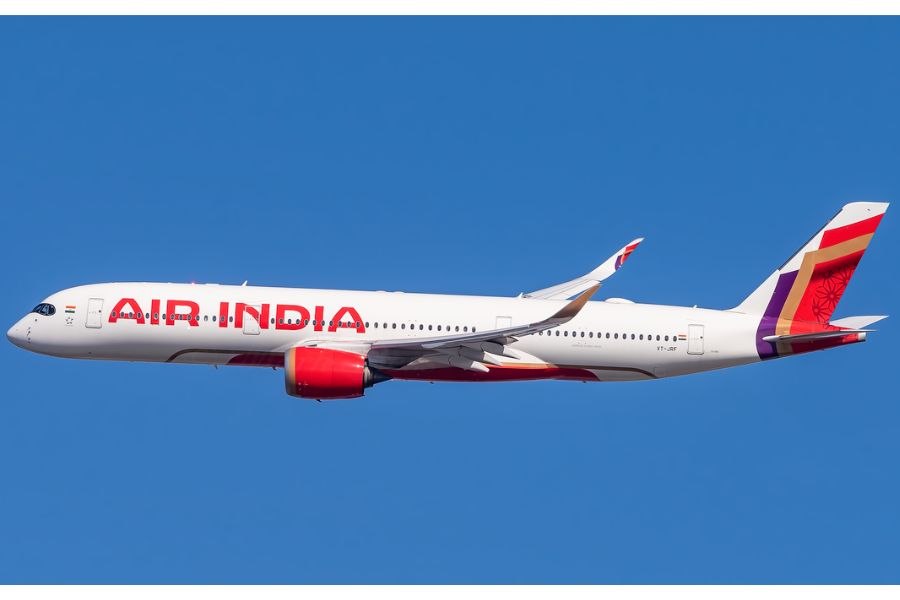
At a time when artists, and that includes photographers, are judged not so much by the quality of his or her work but by his or her politics and other extracurricular activities, Waswo X. Waswo's exhibition, Retro-spective, which is on at the Harrington Street Arts Centre till January 3, comes as a welcome relief. Waswo does not carry any ideological baggage, and what's more, he can be quite funny at times, poking fun as he does at a Rajasthan leaving behind its variegated past of warfare and chivalry with alacrity, and hurtling towards globalization that will soon erase all traces of 'local colour'. The wordplay in the title of the exhibition is reflected in Waswo's choice of medium - the studio portrait, which has become all but obsolete. The large digital prints that the photographer presents here have all the trappings of formal studio portraits, yet the subjects in everyday wear look easy and relaxed, unlike models striking poses.
Waswo's studio is in Udaipur and he uses a hand-painted backdrop depicting typical scenes of Rajasthan such as gardens, farmland, shrubbery, wooded hills, temples, mosques, interiors with all the paraphernalia of life in a feudal society, and huge tanks, not to forget fortresses with crenellated ramparts, in his shots. So there is automatically an element of theatre in his photographs.
To add to that Waswo uses 'properties' extensively. Pitchers, bales of hay piled up on a cart, charpoys, potted plants, pitchers, actual pieces of masonry, carpets and screens for interiors, scooters for contemporary slices of life, heavy figured silver panels and even a camel are placed strategically to create the illusion of reality. Waswo turned an abandoned telephone booth into a liquor shop for one shoot, and it is not unlike the installations of roadside shops Bhupen Khakhar used to create. His models re-enact whatever they do in real life to look as dégagé as possible.
Waswo is an American born in Milwaukee, Wisconsin. He first visited India in 1993 and has lived in Rajasthan since 2006. From a Rolliflex he switched to Nikon d300 -'from chemical to digital', as he puts it. His earlier photographs invoked sepia nostalgia, and despite the criticism he faced, Waswo resolved not to shoot 'modern' India. For this series Waswo found a perfect partner in Rajesh Soni, who delicately tinted all the photographs just the way they did in days of yore.
Waswo breaks away from conventions for his subjects are not grandees and fine ladies but ordinary folk that one rubs shoulders with all over this Land of Kings or Kingdoms. Ordinary folk they may be but there is always a twist in the tail of these photographs.
Krishna, for example, is a strapping, well-muscled and handsome young man fondling a calf (picture) or filching butter from a handi, quite unlike the naughty little boy in the legends and Tanjore paintings. This is Waswo's attempt at rewriting some Indian legends. Thus Hanuman suspended mid-air appears in jeans although the trappings around him - the mountains and the slice of a hill in the hands of the simian deity - remain unchanged. And more radically, the moustachioed goddess Kali with hairy legs is actually the performance artist, Shine Shivan, although in most other respects his pose conforms to the icon. One is unsure of the gender of the beautiful and lithe traditional Rajasthani dancer. The vain young man with a wonderful head of hair trying on a necklace in front of a huge ornamented mirror may remind one of Caravaggio's youths. In reality, however, his nether limbs are withered. This is Waswo's sly strategy of upsetting the apple cart, pulling the carpet from under one's feet, as it were, in a country as conservative as Rajasthan.
Waswo shuttles back and forth from past to present-day reality as easily as anyone armed with a mobile phone turns into a photographer. Many of his male models are all noticeably hunky - his comment on gym culture which is so popular all over this land of machismo. The scooter is one of the most popular vehicles of the upwardly mobile brigade but one may not always be in the transports of delight while using them - as the young businessman with documents spilling out of his briefcase while he makes a call on his mobile phone discovers to his cost. The past and present, the real and the illusory play hide and seek in Waswo's photographs. As in a hall of mirrors, illusion stalks reality, and vice versa.





